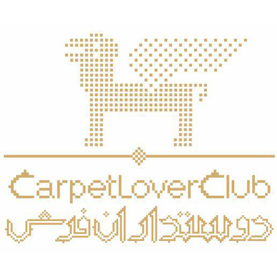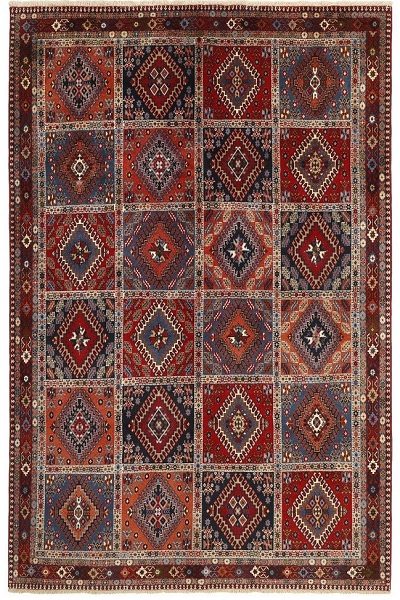
Yalameh rugs are a type of Persian village rug woven in the region of Iran. They are similar in design to Shiraz, Qashqai, and Khamseh rugs, although they usually have brighter colors than most Persian rugs. Yalameh rugs have a unique and very recognizable latch-hooked diamond medallion. These medallions are typically arranged in a single vertical row. They are usually woven with wool on a cotton foundation, but may also have wool foundations. They are finely woven with Turkish Knots and have short piles. These rugs come in a variety of sizesش, and are perfect for tribal decor.
Yalameh is well known for its top-quality tribal rugs with diamond geometric designs. In comparison with other tribal rugs, Yallameh is up there with the best. The pile used in Yalameh rugs is very fine, particularly in comparison to other tribal designs, using soft wool based on a cotton foundation. The pattern is distinctive with large repeated diamonds in a straight line down the carpet, often with geometrical animal or human prints scattered across the field. Dark red or light brown on a blue or orange background is most common for Yalameh, similar to Shiraz rugs, the rugs compliment modern or minimalist furniture beautifully, giving the living space an aura of luxurious style and warm.
Shiraz Yalameh carpet
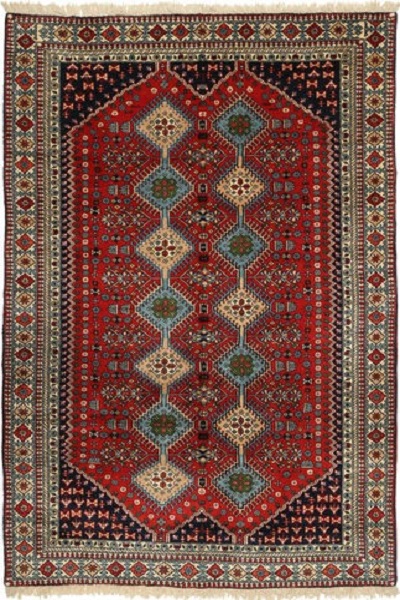
The colourful rugs from southern Iran have been named Yalameh, and are mainly knotted in and around the village of Aliabad in the Fars Province. Rugs of this origin were formerly called Shekarlu, but they were very rare. They were traditionally more colourful than other south Iranian rugs, the colours of which were limited to red and dark blue. In recent years, the supply of Shekarlu has been limited, but a new type of rug entered the market in the 60s and 70s; the Yalameh. These were just as colourful as the Shekarlu rugs, but with a stronger emphasis on blue. The knotting and the patterns are usually more uniform than with the Shekarlu rugs. They share many characteristics with the tribal rugs; they are 100% wool, and bright colours and geometrical patterns are generously used. Although the wool is characteristically soft and shining, it is machine spun, and the colours display a larger degree of variation than normal for tribal rugs, with soft nuances of red, pink, blue, green, and yellow. The motifs, however, are wholly traditional.
general specifications of Yalameh handmade carpet of Isfahan, Shiraz and Borujen
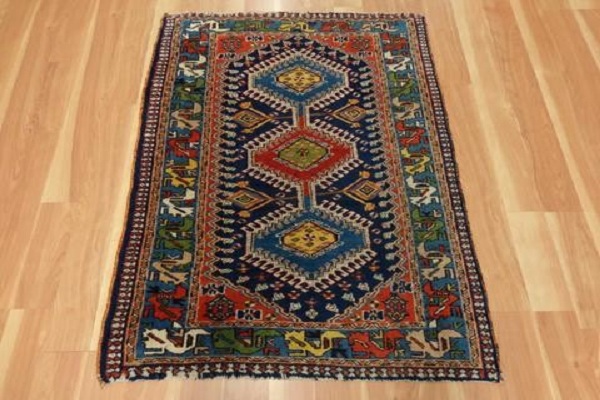
- Visibility: Carpets made in YALAMEH usually have curvilinear patterns.
- Quality: YALAMEH are among the highest quality PERSIAN rugs and carpets produced in Eastern IRAN. They are well known for their patterns and smooth structure.
- Size & Shapes: YALAMEH carpets come in different sizes, but the majority of them are mid-size (4 x 6 to 8 x 10 feet). You can also find large rugs up to 10 x 18 feet.
- Color: Light blue and cream predominate, with ivory as a contrasting color. Other colors such as soft green, red, and brown are found in newer works.
- Texture: Soft wool; thin, tight pile.
- Foundation: Warp is mostly cotton; weft is either cotton or wool.
- Knots: Weavers in YALAMEH use Persian knots. You should check the back of the carpet because the quality of the carpet depends upon the number of knots, which varies, but averages from around 120 KPSI (30 RAJ) up to 842 KPSI (80 RAJ).
- Price: YALAMEH carpets are among the finest quality carpets. Keep in mind that, as a rule, the higher the KPSI, the greater is the price.
know more about maintenance of Yalameh handmade carpet
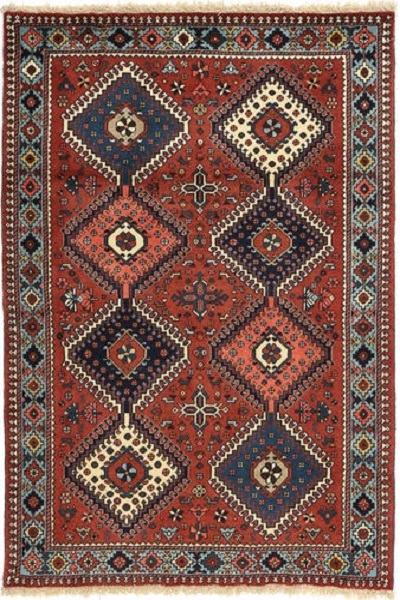
Although humidity and moisture will damage a carpet or kilim, water can and should be used to keep it clean. Washing a carpet will not harm it, provided it is thoroughly dried before being placed on the floor. Nomads clean their carpets by laying them face-down on the snow, and covering them with a shallow layer of snow. As it melts, the snow filters the dirt and dust through and out of the fibers. While this method is practical for nomads living in rural areas, it is probably not convenient for you. A carpet or kilim can be washed with a kind of soap and water. This product can be purchased in liquid or bar soap form. If the soap is solid, grate it finely with a cheese grater to better dissolve it in water. First, lay your carpet or klim flat, wet it and spread the soap lightly over the top. You can also sprinkle a bit of white vinegar over the surface to add shine and strength to the fibers. Brush the carpet or kilim vertically and horizontally, both with and against the grain. Use the back of the brush like a squeegee to force soap and excess water from the carpet or kilim. Rinse the carpet while is lying flat. If you can still smell the vinegar, it is not thoroughly rinsed. Wait until most of the water has evaporated before you hang the piece. Never hang a carpet or kilim if water is dripping from it. This will cause your piece to become deformed, not unlike a dripping wet sweater that is hung out to dry. Finally, wait until your carpet is thoroughly dry before replacing it in your home.
REMOVING STAINS
Stains should be cleaned immediately to prevent them from becoming permanent.
- For alcoholic beveragesstains, lightly dampen the stain with warm water and then remove it with 90% alcohol.
- For chocolatestains, dampen a sponge with ammonia and wipe the stain carefully so as not to spread it.
- For sugar sweats, lightly wipe with a sponge and warm water.
- For mudstains, dry well and vacuum thoroughly.
- For fruit stains, mix 3 parts white vinegar or lemon juice and 1 part ammonia. Dampen a sponge with the mixture, and wipe the stain gently.
- For eggstains, wipe with a mixture of ammonia and cold water. If that fails, use 90% alcohol mixed with water. NEVER USE HOT WATER ON EGG STAIN.
- For inkstains, dampen a sponge with a mixture of water, Savon de Marseille and alcohol. Carefully wipe the stain making sure not to allow the mixture to reach the reverse side of the carpet.
- Forblood stains, clean the stain well with a damp sponge and then wipe with cold, salty water. If this fails, wipe again with white wine. If the stain has dried, dry brush it and then clean with a small amount of water mixed with ammonia. NEVER USE HOT WATER TO CLEAN.
- For make-upand perfume stains, wipe carefully with alcohol.
- For pet urine, first wipe with a damp sponge while the stain as wet. After it has dried, wipe again with a mixture of 3 parts alcohol to 1 part ammonia.
Never apply bleach to your carpet. It will not only change the carpet colors; they will also damage its fibers.

